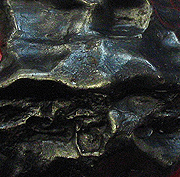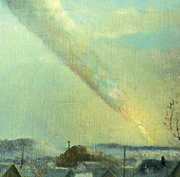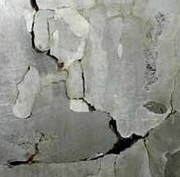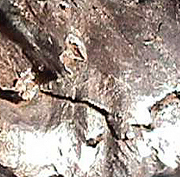Official Name:
Sikhote-Alin is named for the mountains where this meteorite fell.
Location:
In the dense forest of the Sikhote-Alin Mountains, 40 kilometres from Novopoltavka, Maritime Territory, Russia.
Fall or Find:
Fall
Date:
12 February 1947, at precisely 10:38 local time.
Mass Recovered:
The mass of fragments recovered totals approximately 27 metric tons. According to scientific estimates, 40 metric tons of meteoritic material are still buried in the ground and hidden in the forest.
Number of Fragments:
Thousands of fragments were collected. The fragments vary from less than 1 gram to 1 700 kilograms. Micrometeorites weighing only a few milligrams were also found in the ground.
Strewn field:
Many describe the Sikote-Alin strewn field as being the smallest in history: most of its fragments were found in an area measuring 660 by 100 metres. Fragmentation took place at low altitude, so the fragments had little time to disperse. However, the strewn field may actually spread out more widely.
Crater:
More than 106 impact craters were created, making it the greatest crater field discovered to date. The biggest crater is 28 metres in diameter and 6 metres deep. It can still be seen today. The smallest craters contained large, intact meteorites, and the biggest craters contained small, twisted meteorites without their fusion crusts.

Enlargement
Fragment that broke off from the meteoroid as it passed through the atmosphere. The fragment is rounded, its surface is covered by a fusion crust and regmaglypts (“thumbprints”). |
|

Enlargement
Painting by the artist Medvedev, who witnessed the fall of Sikhote-Alin. |
|
Circumstances:
On entry into the Earth's atmosphere, the Sikhote-Alin meteoroid weighed between 200 and 300 metric tons. The fireball created was so bright that it projected shadows in broad daylight. Several witnesses noticed the fireball change colour and become redder. Fragmentation occurred at an altitude of 5.75 kilometres. The meteoroid left an enormous column of multicoloured smoke in its wake.
The shock wave was felt hundreds of kilometres from the impact site, shattering windows. The meteorites laid waste to the forest. Some fragments uprooted trees, others embedded themselves in tree trunks. The next day, pilots flying over the Sikhote-Alin Mountains discovered the site of impact. The ejecta around the craters contrasted with the snow cover. Russian scientific expeditions quickly made their way to the site.
History:
Thousands of people witnessed the fall, but one of the observers found his own way to describe the event without words. An artist named Medvedev had been preparing to paint the landscape in the exact direction the fireball passed. He painted the event with great precision. His painting was reproduced on a stamp to commemorate the tenth anniversary of the fall.
Type:
Iron meteorite
Class:
Coarsest octahedrite, bandwidth 0.9 millimetre.
Group:
IIAB
Composition:
Sikhote-Alin contains 5.8% nickel, 0.42% cobalt, 0.46% phosphorus, 0.28% sulfur, 52 parts per million gallium, 16 ppm germanium, and 003 ppm iridium. The remaining volume is iron.
Scientific contribution:
By studying the Sikhote-Alin strewn field, scientists came to understand why the biggest craters did not contain the biggest meteorites and vice versa. The largest meteorites had more energy when they hit the ground. They created big craters, but could not survive the force of the impact. Most of their mass was pulverized, leaving only small broken fragments.
The study of the dispersion of the fragments allowed scientists to determine the meteoroid's orbit. It came from the asteroid belt. Sikhote-Alin was the first fall analyzed to determine its orbit.

Enlargement
Slice weighing 2 253 grams from the Sikhote-Alin meteorite. The kamacite and taenite alloys form large Widmanstätten figures. |
|

Enlargement
Fragment of Sikhote-Alin found in a large crater. Angular and with no fusion crust, it comes from a massive fragment that struck the Earth at high speed and did not survive the shock. |
|
Comments:
Meteorite showers are generally made up of stony meteorites because the meteorites from this family break apart more easily in the upper atmosphere. Sikhote-Alin, an iron meteorite, is therefore an exception.
Part of the Planétarium's collection:
Yes